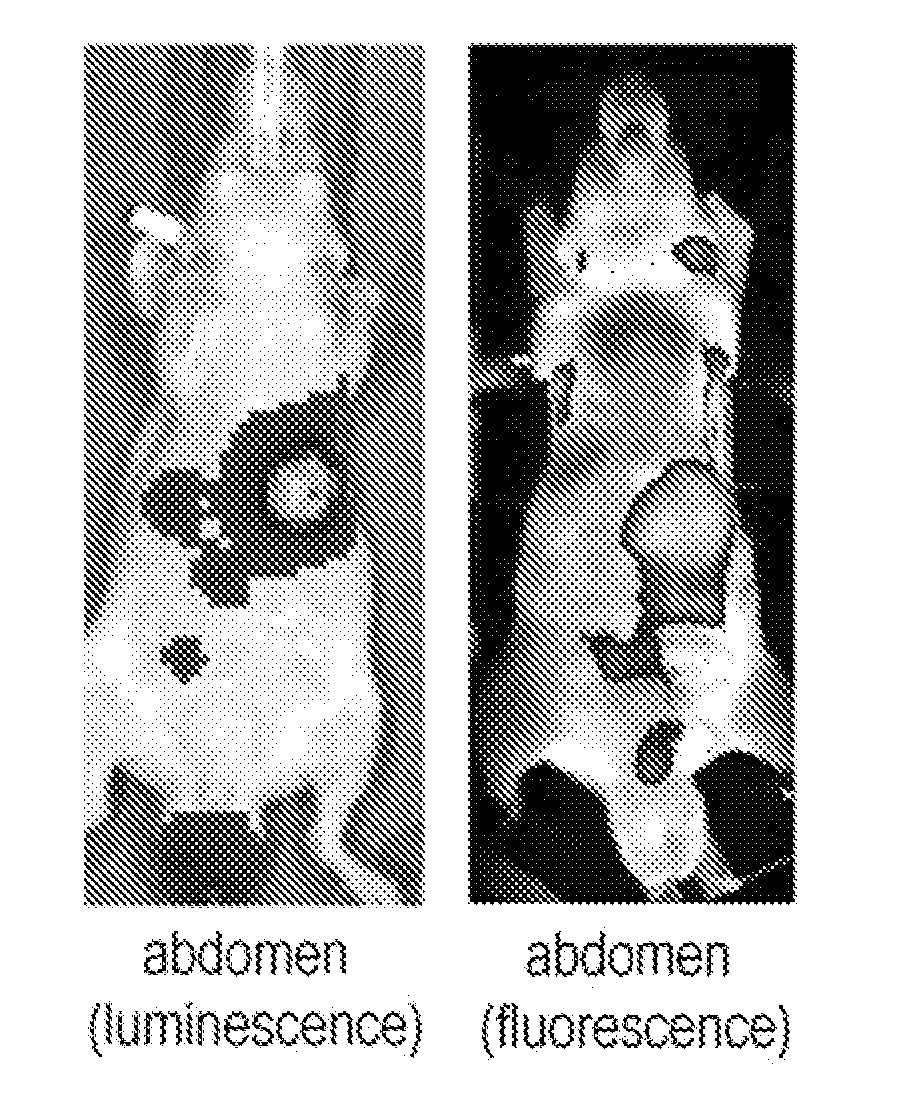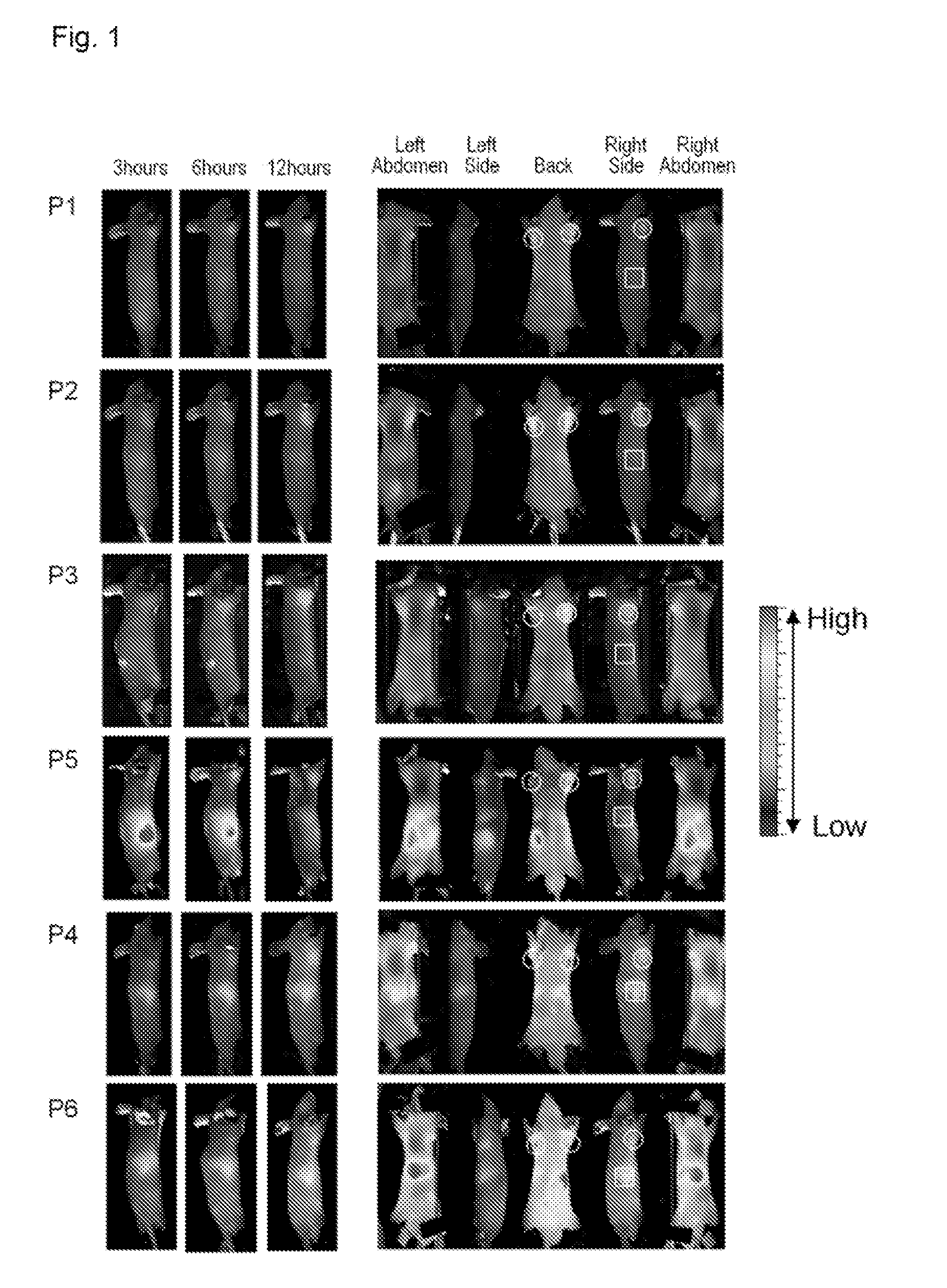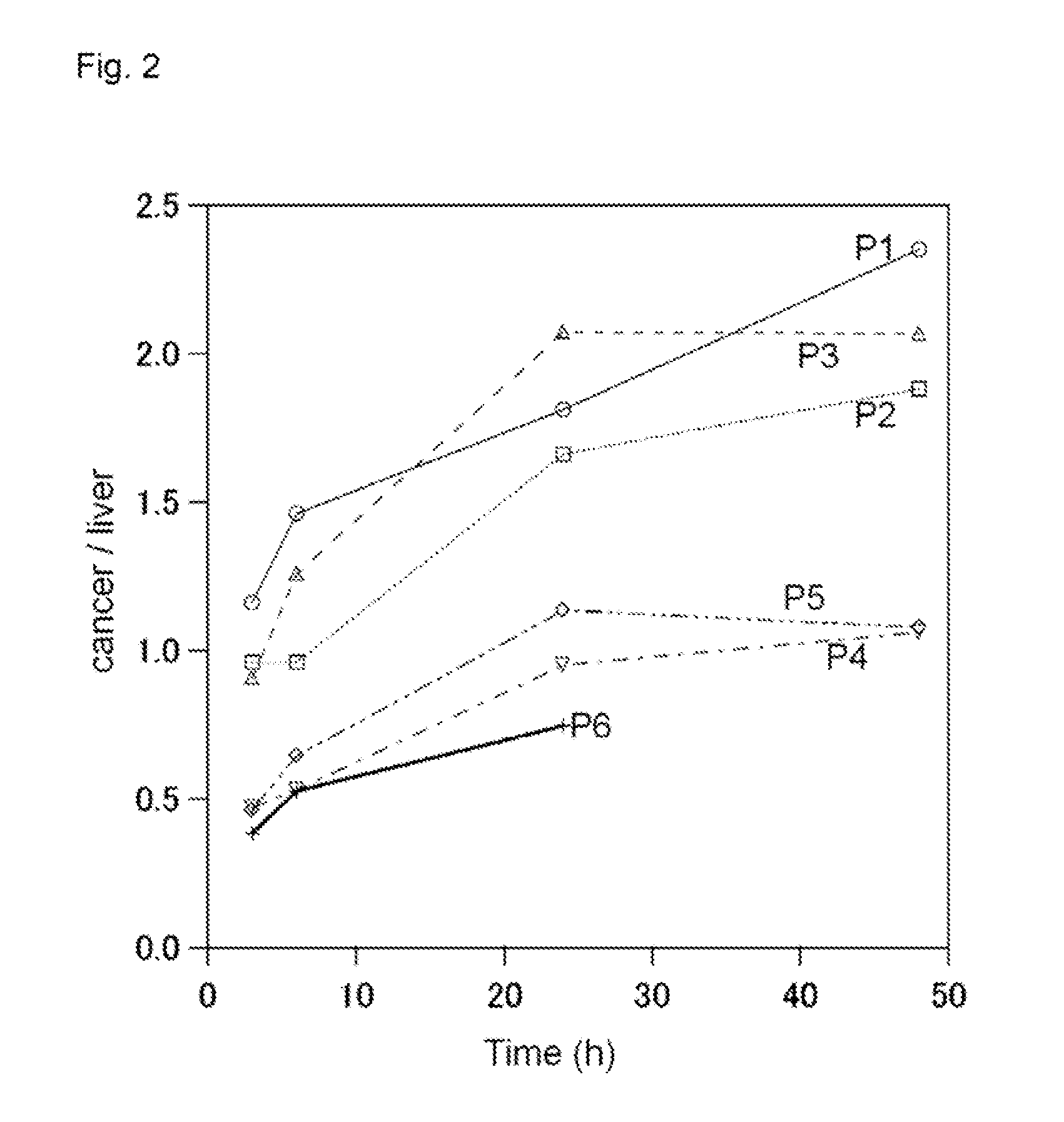Novel molecular assembly, molecular probe for molecular imaging and molecular probe for drug delivery system using the same, and molecular imaging system and drug delivery system
a molecular imaging and molecular probe technology, applied in the field of new molecular assemblies, can solve the problems of limited life of the indicator, high diagnostic equipment cost, and inability to accurately diagnose optically to a living body, and achieves simple and safe method, high safety for a living body, and easy control
- Summary
- Abstract
- Description
- Claims
- Application Information
AI Technical Summary
Benefits of technology
Problems solved by technology
Method used
Image
Examples
experimental example 1
Synthesis of Aminated Poly-L-Lactic Acid (a-PLA)
[0377]In this experimental example, aminated poly-L-lactic acid (a-PLA) was synthesized using L-lactide (compound 1) and N-carbobenzoxy-1,2-diaminoethane hydrochloride (compound 2) (Scheme 1).
[0378]To N-carbobenzoxy-1,2-diaminoethane hydrochloride (compound 2) (310 mg, 1.60 mmol) served as a polymerization initiator, a dispersion liquid obtained by dispersing tin octanoate (6.91 mg) in toluene (1.0 mL) was added. The toluene was distilled away under reduced pressure, and then L-lactide (compound 1) (3.45 g, 24 mmol) was added to perform polymerization reaction at 120° C. under Ar gas atmosphere. After 12 hours, the reaction container was air-cooled to room temperature to obtain a yellowish-white solid. The yellowish-white solid was dissolved in a small amount of chloroform (about 10 mL). The chloroform was dropped into cold methanol (100 mL) to obtain a white precipitate. The white precipitate was collected by centrifugation and dried ...
experimental example 2
Synthesis of Amphiphilic Block Polymer A1 (Polysarcosine-Poly-L-Lactic Acid; PSL1)
[0380]In this experimental example, an amphiphilic substance, polysarcosine-poly-L-lactic acid (PSL1) was synthesized from sarcosine-NCA (Sar-NCA) and aminated poly-L-lactic acid (a-PLA) (Scheme 2)
[0381]Dimethylformamide (DMF) (140 mL) was added to a-PLA (383 mg, 0.17 mmol) and sarcosine-NCA (Sar-NCA) (3.21 g, 27.9 mmol) under Ar gas atmosphere, and the mixture was stirred at room temperature for 12 hours to obtain a reaction solution. Then, the reaction solution was cooled to 0° C., and then glycolic acid (72 mg, 0.95 mmol), O-(benzotriazol-1-yl)-N,N,N′,N′-tetramethyluronium hexafluorophosphate (HATU) (357 mg, 0.94 mmol), and N,N-diisopropylethylamine (DIEA) (245 μL, 1.4 mmol) were added thereto to perform reaction at room temperature for 18 hours.
[0382]The DMF was distilled away under reduced pressure using a rotary evaporator, and then purification was performed using an LH2O column. Fractions showi...
experimental example 3
Synthesis of Sarcosine-Poly(Leucine-Aminoisobutyric Acid) (SLA)
[0383]In this experimental example, an amphiphilic substance, sarcosine-poly(leucine-aminoisobutyric acid) (SLA) was synthesized from sarcosine-NCA (Sar-NCA) and poly(leucine-aminoisobutyric acid) (LAI) (Scheme 3).
[0384]Boc-(Leu-Aib)8-OMe (600 mg, 0.349 mmol) was added to a mixed solution of 6.0 mL of trifluoroacetic acid (TFA) and 0.6 mL of anisole to remove a Boc group to obtain a trifluoroacetate derivative. The trifluoroacetate derivative was washed with isopropyl ether and dried under vacuum for 2 hours to obtain a dry product. The dry product was dissolved in chloroform and neutralized with a 4 wt % aqueous sodium hydrogen carbonate solution to remove a TFA group. The chloroform solution was concentrated to obtain 420 mg (0.259 mmol) of poly(leucine-aminoisobutyric acid) (LAI) (H-(Leu-Aib)8-OMe; LAI).
[0385]The thus obtained LAI was dissolved in 8.0 mL of a 1:1 (V / V) mixed solution of DMF and HCl3, and the mixed sol...
PUM
| Property | Measurement | Unit |
|---|---|---|
| particle size | aaaaa | aaaaa |
| optical purity | aaaaa | aaaaa |
| particle size | aaaaa | aaaaa |
Abstract
Description
Claims
Application Information
 Login to View More
Login to View More - R&D
- Intellectual Property
- Life Sciences
- Materials
- Tech Scout
- Unparalleled Data Quality
- Higher Quality Content
- 60% Fewer Hallucinations
Browse by: Latest US Patents, China's latest patents, Technical Efficacy Thesaurus, Application Domain, Technology Topic, Popular Technical Reports.
© 2025 PatSnap. All rights reserved.Legal|Privacy policy|Modern Slavery Act Transparency Statement|Sitemap|About US| Contact US: help@patsnap.com



